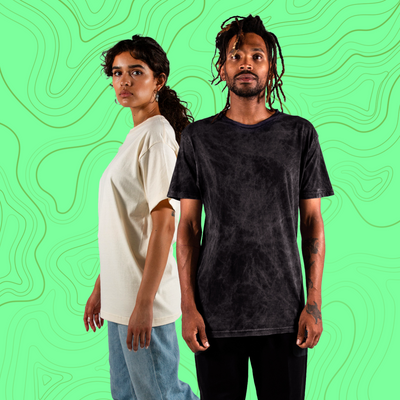Mastering the Basics of Fabric Types: A Beginner's Guide
Posted by ARTEMIO NERVEZ JR

Understanding the different types of fabrics and their unique characteristics can significantly enhance your wardrobe choices and care practices. This beginner's guide will help you navigate the world of textiles, making you more informed about what you wear and how to maintain it.
1. Cotton: The All-Rounder
Cotton is one of the most popular fabrics in the world due to its breathability, softness, and durability. It's ideal for everyday wear, from t-shirts and jeans to dresses and bed linens. Cotton is also hypoallergenic and moisture-absorbent, making it comfortable for all seasons.
2. Wool: The Warmth Provider

Wool is renowned for its warmth and luxurious feel. It's a natural fiber that regulates body temperature, making it perfect for winter clothing like sweaters, coats, and scarves. Wool is also naturally water-resistant and durable, which makes it a staple for high-quality, long-lasting garments.
3. Silk: The Luxe Choice
Silk is a protein fiber that offers a smooth, soft texture that drapes beautifully. Known for its natural sheen, silk is favored for formal wear, lingerie, and bedding. While it requires careful maintenance, silk's elegance and comfort make it a favorite for those who prioritize luxury in their wardrobe.
4. Linen: The Breathable Classic

Linen is made from the flax plant and is highly valued for its strength and ability to keep cool in hot weather. It's often used for summer clothing, table linens, and towels. Linen is absorbent, dries faster than cotton, and becomes softer with each wash, though it does wrinkle easily.
5. Polyester: The Versatile Synthetic
Polyester is a synthetic fabric praised for its durability, resistance to shrinking and stretching and quick-drying properties. It is widely used in everything from sportswear to fashion garments. Polyester blends well with other fibers, enhancing durability and decreasing wrinkling and shrinking.
6. Rayon: The Artificial Silk

Rayon, a man-made fabric made from regenerated cellulose fiber, mimics the feel and texture of natural fibers like silk, wool, and linen. It is highly absorbent, soft, and comfortable, which makes it popular for dresses and blouses. However, it can be delicate, so gentle washing is recommended.
7. Denim: The Tough Fabric
Denim is a sturdy cotton twill fabric most commonly used for jeans and jackets. Known for its indigo color and rugged appearance, denim is durable and wears well with time. It's also versatile, suiting a range of styles from casual to more refined looks.
Conclusion
Mastering the basics of fabric types is essential for anyone looking to make smarter choices about their clothing. Whether you're shopping for new outfits, sorting laundry, or deciding on seasonal wardrobe swaps, understanding these fabric types can lead to better purchases and garment care.
At VS Tees, we believe that understanding the basics of fabric types is crucial for making informed choices about your wardrobe. Whether you are shopping for new outfits, organizing your laundry, or planning seasonal wardrobe changes, a solid grasp of different fabric types will guide you to smarter purchases and more effective garment care.





